THE TAJ MAHAL – WORLD’S MOST EXPENSIVE LOVE STORY
“Let the inhabitants of the world be divided into two classes ” says Edward Lear, an English illustrator and poet, “them as has seen the Taj Mahal, and them as hasn’t.” The building is so beautiful that it makes anyone looking at it feel as if they are witnessing something truly great, and so our story of the Taj Mahal starts.
One of the new seven wonders of the world and, for a lot of people, the first thing that comes to mind when they think of India, the Taj Mahal has been on the UNESCO’s World Cultural Heritage List since 1982 as the “jewel of Muslim art in India and one of the universally admired masterpieces of the world’s heritage.”
The Story of the Taj Mahal: A Great Love
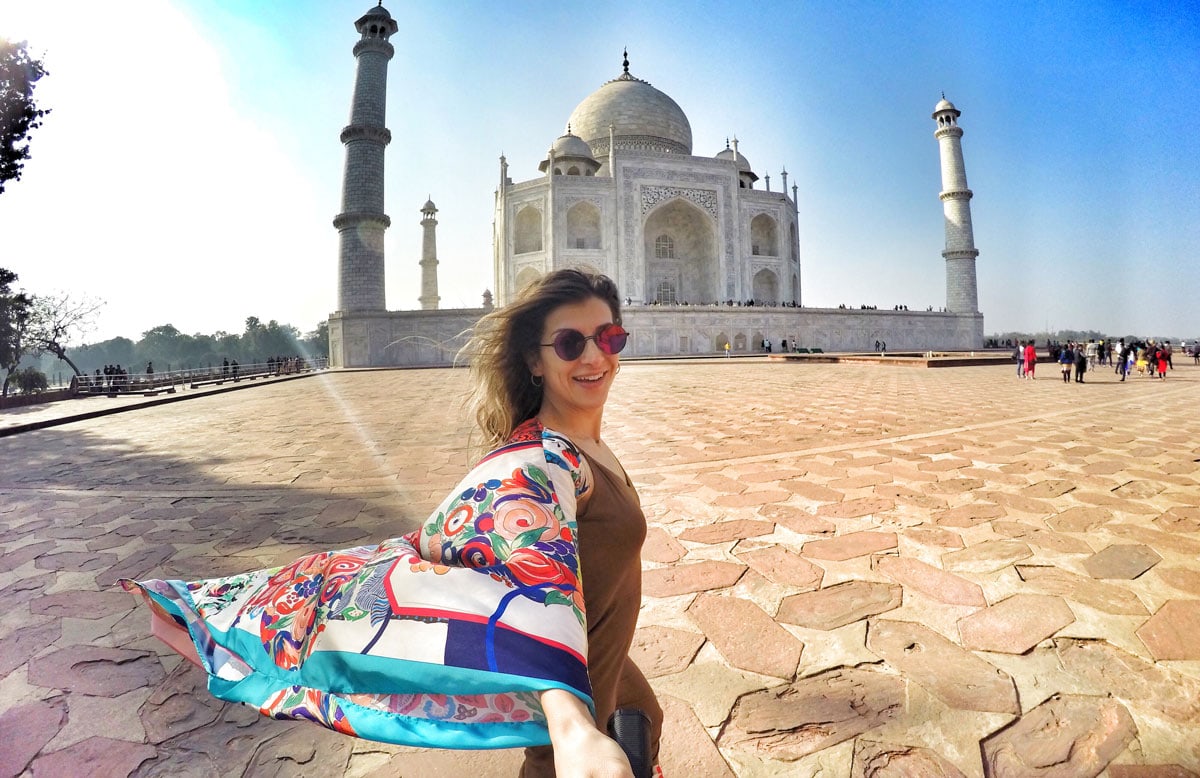
The Taj Mahal is the most expensive declaration of love: it cost $1,062,834,098!
Just like many other masterpieces, that became a gift to the entire human civilization. The story of the Taj Mahal is a love story. Some believe that it is a Hindu temple, and some believe that it is a mosque with four minarets, but the Taj Mahal is actually a mausoleum built by Shah Jahan for his much-adored wife, Mumtaz Mahal. In today’s terms, he spent $1,062,834,098 on it!
Shah Jahan and Mumtaz Mahal had a “marriage of love.” Apart from Mumtaz Mahal, Shah Jahan had two other wives but these marriages were products of political alliances. It is said that his marriage with his other 2 wives were just a “procedural requirement,” and that Shah Jahan was only romantically involved with Mumtaz Mahal.
From arranged marriage to romance
Interestingly, their fathers had set up the marriage when they were 14 and 15 years old. They got married five years later, and were together for 20 years. Mumtaz Mahal gave birth to 14 children, but only eight survived. The historical record shows there was abundant love between Shah Jahan and Mumtaz Mahal, a love filled with great desire and affection for one another.
Shah Jahan was the type of leader who entrusted his wife with his personal and governmental matters. He even gave her the right to use his seal. But Mumtaz Mahal did not like politics very much, so she didn’t have much to do with the operations of the state, though she did go on trips with her husband.
She died while giving birth on one of these trips before reaching the age of 40. Shah Jahan had her temporarily buried in a beautiful garden, and he fell into a depression. He got back on his feet a year later, through his daughter’s efforts.
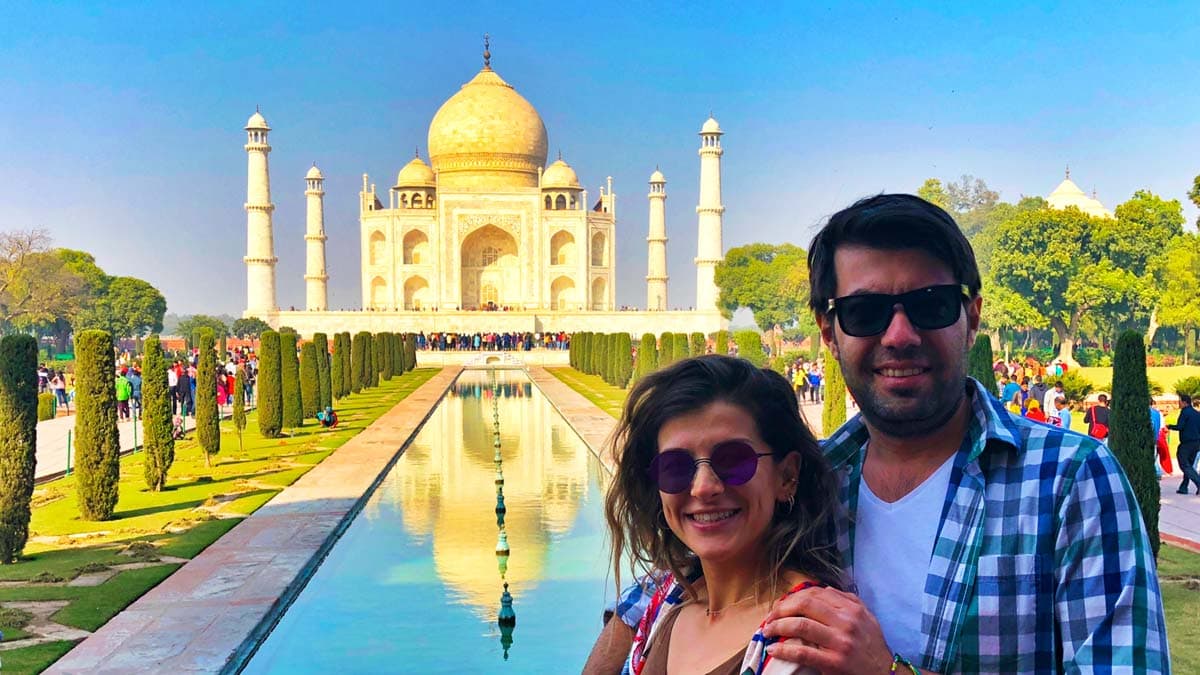
Completed in 22 Years with the Help of 20,000 Workers
The story of the Taj Mahal is also one of incredible engineering: It is considered to be a marvel by engineers. It was built on the swamps along the banks of the Yamuna River. It is said that it was built here because Shah Jahan wanted to be able to see his wife from his palace. To prevent the structure from sinking and sliding, he had to create a firm ground. So he had a huge whole dug, stabilized rocks inside it, then built from this base.
Architects even took precautions in case of an earthquake. They made the towers in such a way that they would not sway during a tremor and damage the building.
The building itself was constructed using white marble and was completed in 1632. It is adorned with rubies, sapphires, diamonds, emeralds, pearls and mother-of-pearl.
Pakistan Threatened India to Bomb the Taj Mahal
The Brits split India three ways based on religious denomination – first into two (India and Pakistan), and then into three (with Bangladesh), which resulted in heightened tensions. During the war in the 70s, Pakistan threatened to bomb the Taj Mahal, so the airspace above the building was closed.
Relations between the two countries remain tense today, and violent altercations pop up now and then. If you want to find out more information about India, then you can head over to our post on the country.
Know before you go: When you visit the Taj Mahal, there are serious security measures in place even today as you enter the palace. You won’t be able to bring in cologne, sunscreen or a tripod. They don’t even allow selfie sticks. You’re allowed to bring your camera in with you, but you aren’t allowed to take any other equipment.
Tips On Visiting Taj Mahal
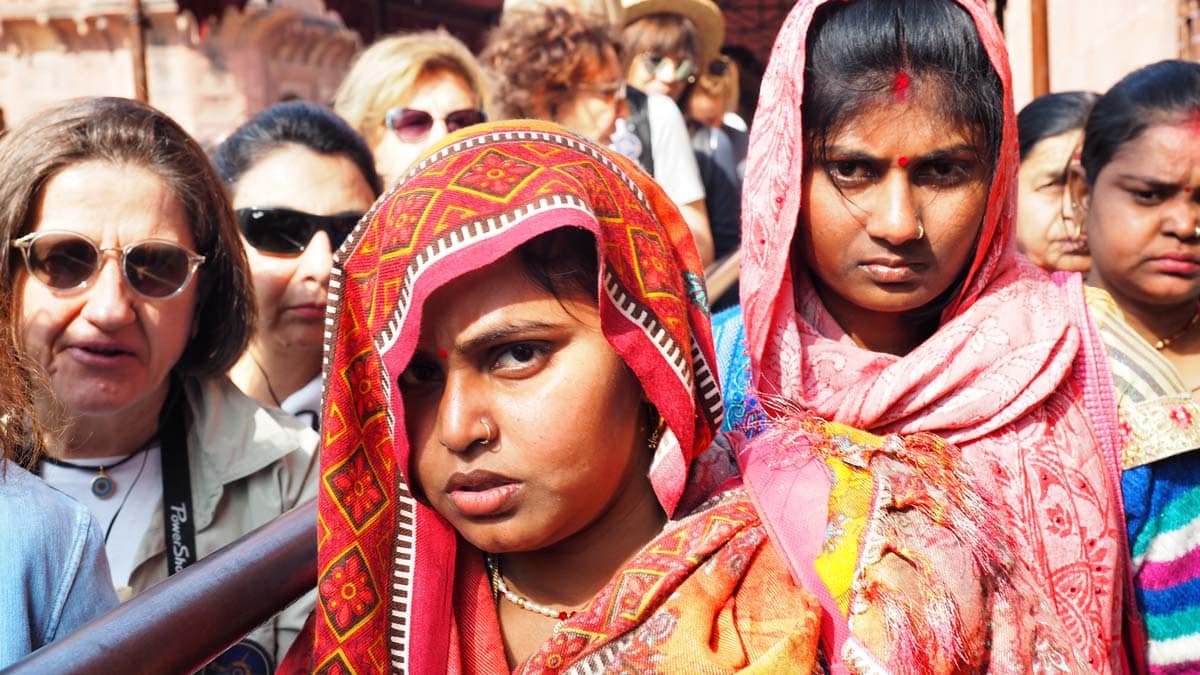
- Lines: There are different lines for local and tourists. Don’t go into the wrong line.
- Ticket costs: There are two tariffs, a “High-Value Ticket” and a “General Value Ticket.” Tourists buy the “High-Value Ticket,” which is more expensive, but there’s less of a wait.
- Photo ops: As soon as you enter, you’ll see a group of people who are trying to take photos right across from the Taj Mahal. Everyone is concentrated here, but there is a platform in the middle of the reflection pool that is calmer and, we think, nicer.
- Souvenir photos: You’ll also see some guys who are taking photos and have a printer in their backpacks. They will try to sell you different services that have nothing to do with the Taj Mahal, so you can use your own judgement for this one.
- Limited photography: It’s not forbidden to take photos and videos inside, except for the domed section where the tombs of Shah Jahan and Mumtaz Mahal are located.
- Best time to visit: Definitely try to come during sunrise as the light during this time of day is ideal for photos AND because there won’t be as many people.
- Second-best time: If you cannot come at sunrise, our second recommendation is sunset.
Hours to visit the Taj Mahal
The Taj Mahal is open every day except Friday, from sunrise to sunset. Tourists can stay as long as they want.
On Friday, only the mosque is open in the afternoons for Friday prayers.
Entry Fee & Where to Buy Tickets
There are three ticket points for those who want to buy tickets at the door. The west gate, the east gate (these two doors are open from sunrise to sunset), and the south gate (This box office is open from 8 am – 7 pm). However, we recommend buying a ticket online before going: asi.payumoney.co
The entry fee for a standard ticket is 1,000 Rupees. There are also all-day tours that cover all of Agra. These tours should include the Taj Mahal, the Agra Fort and Fatehpur Sikri and run from 10:30 am – 4:30 pm, costing 450 Rupees for children and 3,000 for adults.
There are also night tours. You’ll have to buy your ticket for the tour one night before from the Archaeological Survey of India (ASI) 22, Mall Road, Agra. You can purchase tickets from 10 am – 6 pm here. But make sure to check when the tours are, as they only happen five nights per month.
These tours are scheduled to fall on two days before, during and two days after the full moon. During those days, the tours happen from 8:30 pm to 12:30 am. Between these hours, a new tour starts every 30 minutes, and each tour has a limit of 50 people. The cost for this is 750 Rupees for a full ticket and 500 Rupees for a child. Of course, these prices are different for locals.
The Other Story of the Taj Mahal: Inside The Structure
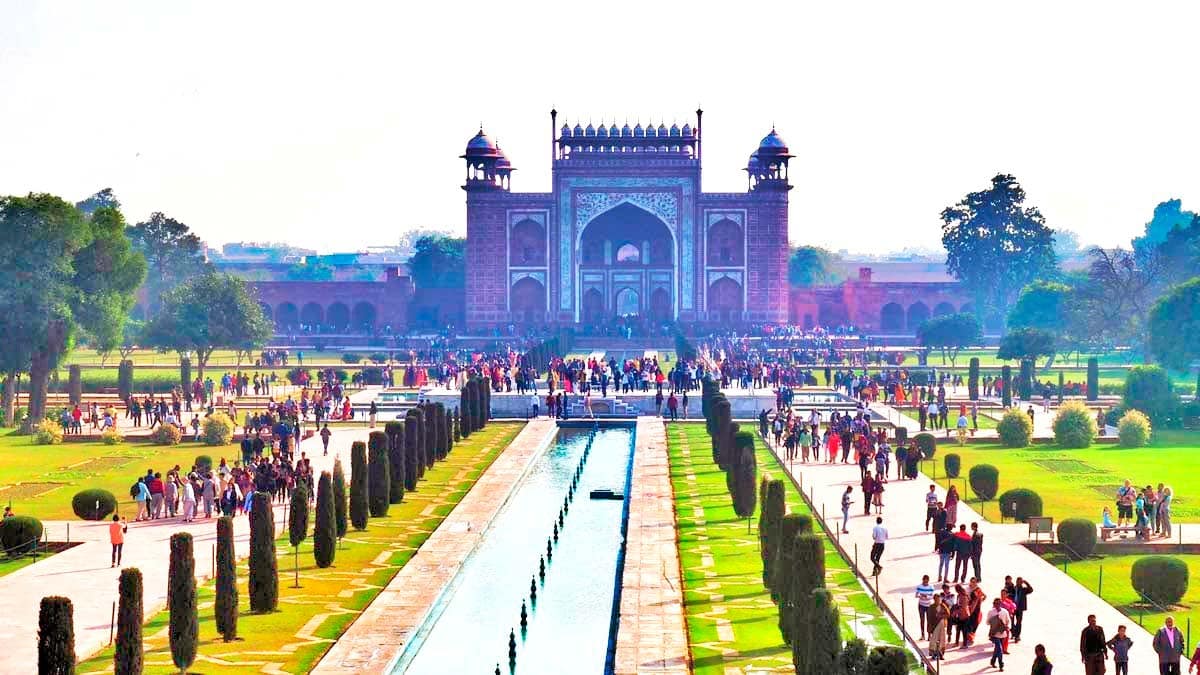
The Taj Mahal is not just a shrine but a massive complex that has other buildings in it. You’ll want to set aside 1-1.5 hours to go around inside and half an hour for other things like picking up your ticket and going through security.
The massive structure you see in the above photo is the entry gate. The reflection pool goes from the gate to the Taj Mahal.
The Taj Mahal – which consists of the main gate, the mausoleum, the mosque, and the guest house – is considered to be the best example of Indian-Islamic architecture. This excellence in architecture is based on the rhythmic combination between convex and concave, shade and illumination, arched and domed, as well as how spaces are used.
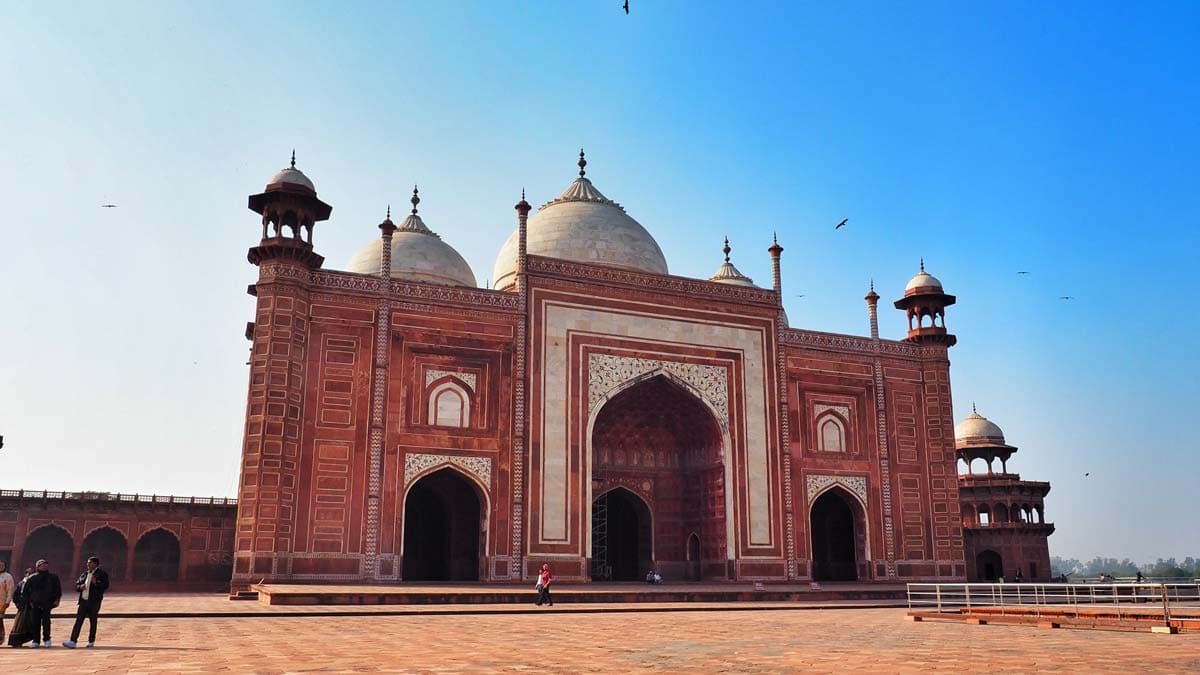
The Taj Mahal, which is a 305 by 580-meter rectangular structure, has a dome that measures 35 meters high. The sarcophagi of Mumtaz Mahal and Shah Jahan are located on the top floor under the dome, but the actual graves are on the bottom floor. The dome has its own acoustics, and sounds are said to echo seven times.
The addition of precious and semi-precious stones to the interior of the building doubles its value. There are 42 emeralds, 142 rubies, 625 diamonds and 50 pearls as well as thousands of onyx, mother-of-pearl and turquoise pieces.
The real magnificence of the Taj Mahal comes from the surrounding garden and landscape. The four minarets surrounding the Taj Mahal provide a 3D effect, which is unprecedented in Mughal architecture. The grand main gate was influenced by architecture trends in Iran at the time. You can also make out this emphasis in the symmetry as well.
The Mughal Reign in India, a.k.a Everything is Turkish 😉
Inheritors of the Timurid Empire
Maybe your first sighting of the Taj Mahal was in a history book, or a poster painting at an Indian restaurant or even a Hollywood movie like “The Fall” or “Slumdog Millionaire.” Though the site is truly Indian, Turkish people love to lay claim to history’s wonders, so of course, we’ve found our connection to the story of the Taj Mahal! The Mughals, who ruled from 1500 to 1850, were part of one of the 16 Turkic states established in the region. Mughals can be considered to be of Turco-Mongol origin since they were the continuation of the Timurid Empire, which was a Turco-Mongol empire comprising modern-day Iran.
The Mughals governed an enormous empire covering Pakistan and India for nearly 200 years. Agra was the capital of this empire.
Babur, who was the founder of the Mughal Empire, took control at the age of 11 when the Timurid Empire disintegrated. Babur decided that the best way to grow the empire was by going south and decided to set up shop in India.
Mughal State established in Agra
Babur captured Agra and Delhi, making Agra the center of the Mughal state. Babur was able to capture the northern part of India to consolidate his dominance, but then he passed away in 1530 due to illness. Before he died, he passed his power onto his son, Humayun.
During Humayun’s rule, he strengthened the state by providing central authority, which dealt with revolts at that time. Political stability and cultural unity began to be established in the lands of India. Akbar, who was Humayun’s son and came to power at the age of 14, made quite successful conquests during his reign, tolerated other religions in the country, strengthened the economy and left a strong state to his son Jahangir. The Jahangir period is when we begin to see the Persian and Muslim influence.
The Rise & Fall of Tolerance
The most visible sign of development in Shah Jahan’s period was through architecture, particularly the Taj Mahal and the Friday Masjid in Delhi. Unfortunately, the tolerance seen during Akbar’s rule didn’t last long, and we begin to see pressure to convert to Islam as well as rising nationalism.
Particularly during Aurangzeb’s rule – who is regarded as the last effective Mughal emperor – religious ceremonies for Hindus were forbidden, their temples were destroyed, alcohol was banned and non-Muslims were taxed beginning in 1679. It should be no surprise that all these developments triggered rebellions and established the foundation for the end of the empire.
We suggest you read about Religion in India and What Hinduism is here.
Enter the British
After Aurangzeb, order in the country was effectively destroyed. The Mughals remained as pawns under the British until the 1850s, even after the country was completely under British rule. The last ruler, Bahadur Shah Zafar, was condemned in 1857 after he rebelled against the British. When the Shah’s seat of power fell, the Mughal Empire officially came to an end. We also described the influence of the British over India during this period in our writings on India during the period of British Administration and Colonialism.
Where is the Taj Mahal?
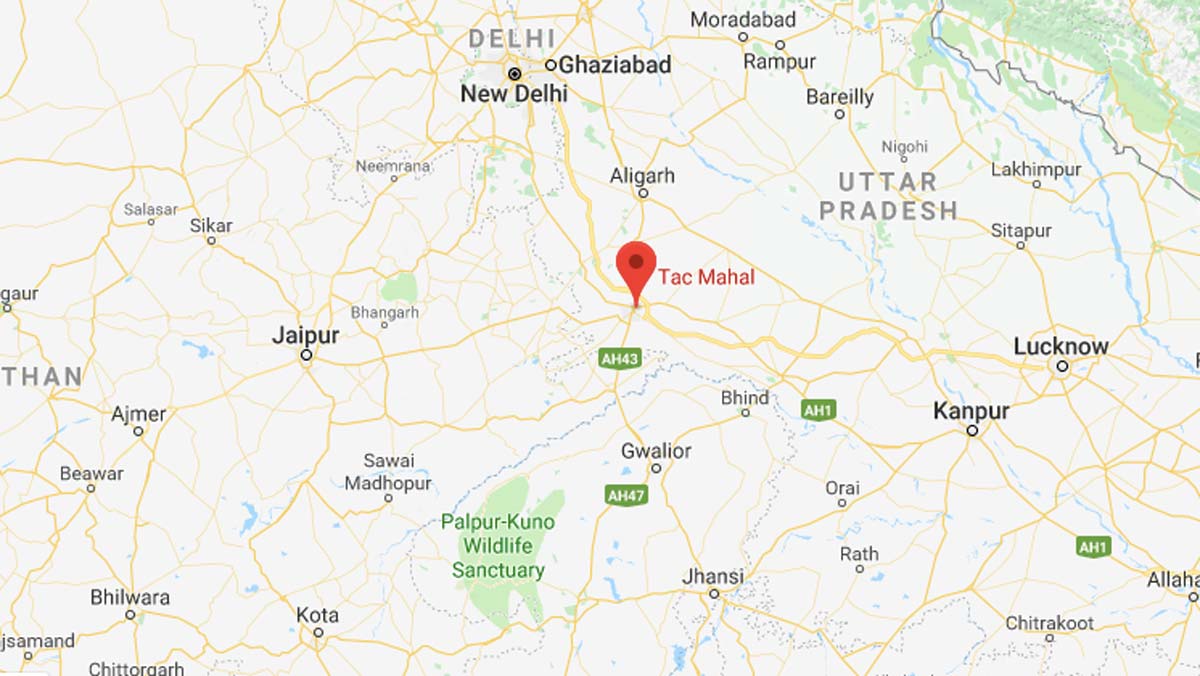
The Taj Mahal is located in Agra, Uttar Pradesh, India. Click here for the location.
Getting there: How to Visit the Taj Mahal
Flying
The best way to get to Agra is through New Delhi, as you’re unlikely to find direct international flights. However, even Air India does not have direct flights to Agra, and you’ll have to stopover at Varanasi. Thus, it makes more sense to hop onto a train from New Delhi to Agra. You can choose from the Shatabdi Express, Rajdhani Express and Superfast Express. For a train ride in India, it’s a relatively short one: only 2 – 2 1/2 hours.
Doing the Golden Triangle by Train
Agra, New Delhi and Jaipur make up the golden triangle tourist circuit in India. People who want to do the golden triangle usually start in Delhi, go to Agra and finish their tour in Jaipur. One of the most popular trains is the Shatabadi Express to take this route. The Superfast Express goes between Jaipur and Agra and takes about 4 hours from one city to the other.
Planning a trip to India?
– Our Life in India Guide (General information about the country. What kind of place is it for travelers, religion, caste system, misconceptions about cleanliness and everything you need to know before you go)
– Our India Travel Guide (budget, route, alerts, as well as suggestions and preparation tips before you go)
For those of you who don’t have a lot of time in India, we recommend doing the Golden Triangle tourism circuit, which includes the Taj Mahal and its city. Click for other places to visit in Agra. We’ve also written about two other stops on the Golden Triangle: Jaipur & Delhi.
Join Us On Instagram
https://www.instagram.com/p/Bd0VP-LjPzb/

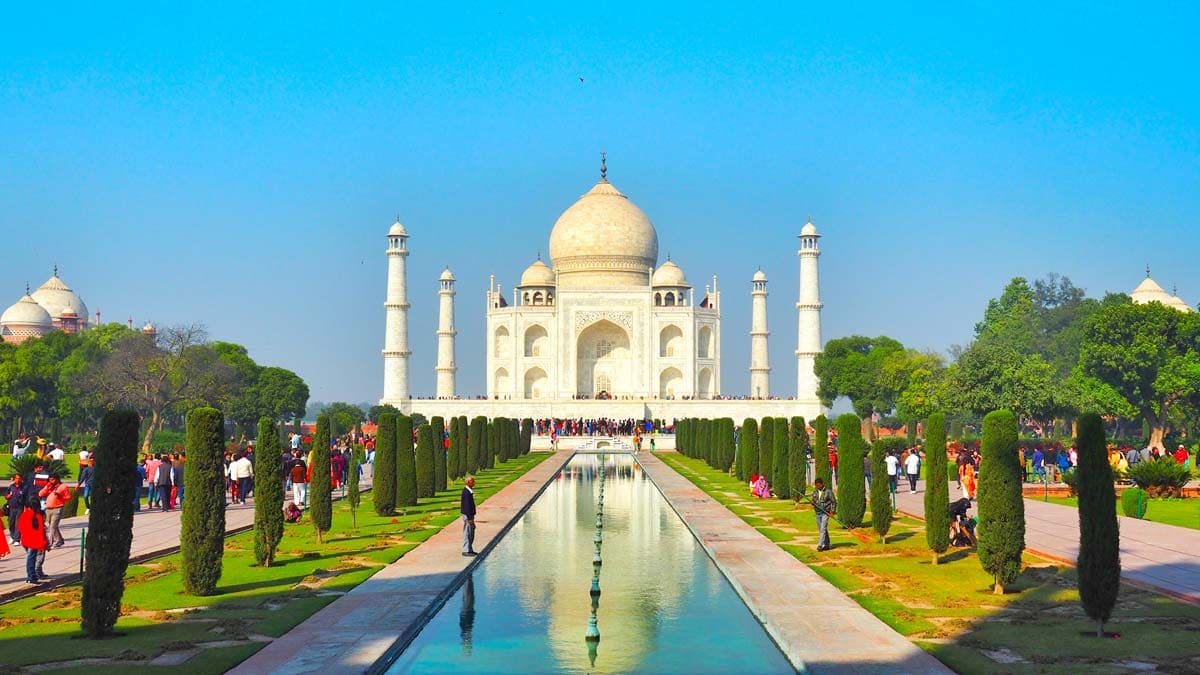
The story is a greater Love than this man no women who were married, having children out of wedlock. You know the only begotten son that thee loved so much he gave to the world, the Taj Majal was already built by the Lord, not man’s hands. Ever since we came into life man have been lying about Jesus Christ. India is part of the Son of God just as every nation is.
Hi Biz Evde Yokuz,
This is a fascinating post about the Taj Mahal and the love story behind it! It’s amazing to think that such a magnificent monument was built as a tribute to a great love, and the details provided in this post really bring the story to life. I appreciate the historical context provided in this post, such as the significance of the Mughal Empire and the role of Emperor Shah Jahan in commissioning the Taj Mahal. It’s also interesting to learn about the various materials and techniques used in the construction of the monument.